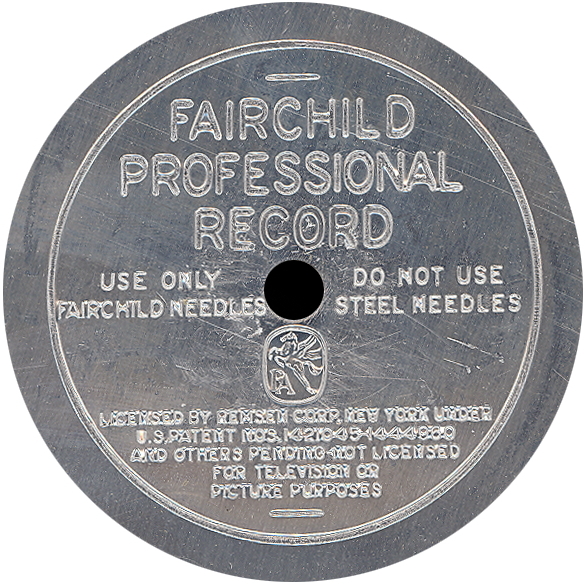EARLY RADIO RECORDING ON DISK
by Art Shifrin
 Part 1 of 12 sides of the debut broadcast of "45 Minutes In Hollywood."
Part 1 of 12 sides of the debut broadcast of "45 Minutes In Hollywood."The variety show, sponsored by Borden's Milk, debued on CBS on January 27, 1934. It starred Cal York with Mark Warnow's Orchestra.
To hear the first three and a half minutes of the actual broadcast, which featured the actress Claudette Colbert, listen HERE
The recording medium is a 12" uncoated aluminum disk into which grooves were embossed, not cut. Without going too far into the center, a 12" disk could accommodate 3.5 minutes. A 16" disk turning @ 33.33 could accommodate 15 minutes. This kind of disk was the first that enabled "instantaneous recording." Meaning, instead of a disk having to be manufactured (masters electroplated and then pressed into playable copies), the original was intended to be played (a few times). Note the caveat "DO NOT USE STEEL NEEDLES." They were the common (even professional) form of what we now call a stylus. The aluminum grooves would be instantly gouged by the heavily tracked (measured in ounces, not grams as today) steel. So, playback was done with bamboo needles (I am not kidding).
The quality of these recordings is NOT state of the art for the time. The best quality shellac pressings had much better fidelity and much mess noise. But for applications in which the costs of multiple copies were not justified, these were expedient.
 Fairchild recording blank Fairchild recording blank
By the early 40s here in the US, magnetic recording on wire was available. Tape followed after WWII, the best form of it having been appropriated from Germany.
Ampex, the first 'big' manufacturer of professional audio tape recorders essentially reversed engineered a 'confiscated' "Magnetophon." It's model 200A.
Pictured above is the center of a Fairchild recording blank. It's embossed. Note the interesting prohibition of use for recording of of television signals (patents issues).
_____________________
Art Shifrin is a sound engineer who specializes audio restoration.
click to go to the WCBS Memories page
click to return to main WCBS Appreciation Site page
|

